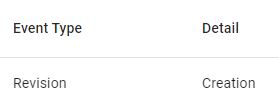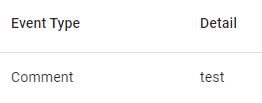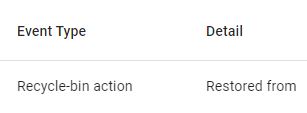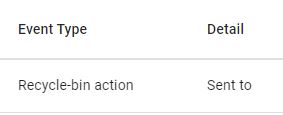Document events are created when user or workflow actions manipulate a document in Nucleus One. This guide will display what the different basic event types mean when reviewing the event history of a document. This article also contains examples of how these event types are displayed.
REVISION EVENTS:
1. The “Revision” Event Type denotes that the document has been created or updated in a way that altered the existing document’s contents.
2. The “Comment” Event Type is recorded when a new comment is added to a document from the comments area. The “Detail” portion of the event type displays the content of the comment. In this case the comment is the term “test”.
FIELD EVENTS:
3. A “Fields” Event Type states that a field has been edited or updated by a user. The “Detail” portion of that event type displays which field has been updated and with what value. In this case, the field value for the “Test Field 1” field has been updated to the term “This is a test”.
4. A “Fields” Event Type may also contain multiple field updates that took place at the same time. The “Detail” portion of the event type displays each field’s name and displays the new values for each field.
RECYCLE BIN EVENTS:
5. The “Recycle-bin action” Event Type is exclusive to sending a document to the recycle bin or restoring a document from the recycle bin area. The action performed is located in the “Detail” portion of the event.
SIGNATURE EVENTS:
6. The “Signature event” Event Type occurs when the document has been sent to an email address in order to be signed. If the document has been sent for signature, the corresponding detail will display whose signature is pending on that document.
7. When a document has been signed and completed, there will be another “Signature event” Event Type. The “Detail” is a confirmation that a signature has been received.
8. When all signatories have signed the document, a final “Signature event” Event Type will appear. The “Detail” area will confirm that signature gathering has been completed.








